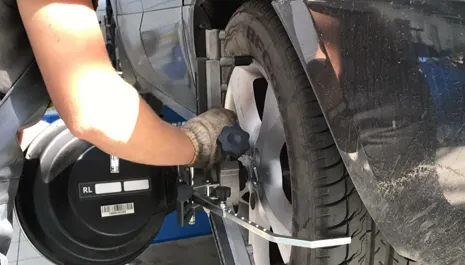Last Updated on March 13, 2023
Removing wheel weights without damaging your wheels can be a difficult task. It is essential to take your time and use the right tools in order to avoid any damage. Throughout this article, I will outline for you the steps and make sure you learn how to remove wheel weights properly and safely without causing any damage.
What Tools Do You Need?
It is necessary to have the following tools with you in order to remove the wheel weights:
- Flathead screwdriver
- Hammer
- Chisel
- Wire brush
- Bucket
- Water
How to Remove Wheel Weights Safely?

In order to remove wheel weights safely without causing any damage to your wheels, you need to follow the following steps:
1. Park Your Car:
Make sure your car is parked on a level surface and that the handbrake is engaged. It is important to make sure the car is stable before you start removing the wheel weights.
2. Remove the Hubcap:
Use a flat head screwdriver to remove the hubcap. If the hubcap is stubborn, you can use a hammer to gently tap it lose. If the hubcap is damaged, you can replace it with a new one.
3. Loosen the Screws:
There will be screws around the edge of the wheel weight. Use a screwdriver to loosen these screws. Do not obliterate the screws; loosen them enough so you can remove the wheel weight.
4. Remove the Wheel Weight:
Gently pry the wheel weight off the wheel with a chisel. If it doesn’t come off quickly, use a hammer to tap it loose gently. Be careful not to hit the wheel or damage the surface.
5. Clean the Wheel:
Use a wire brush to clean the surface of the wheel. This will remove any excess adhesive or metal particles from the weight.
6. Put Everything Back Together:
Once you have cleaned the wheel, put everything back together in the reverse order. Make sure the screws are tightened securely and that the hubcap is in place.
7. Test Drive:
Take your car for a test drive and make sure the wheel weight is securely in place. If it isn’t, you may need to tighten the screws.
These are the steps you need to take in order to remove wheel weights safely and without causing any damage.
Tips for Avoiding Damage When Removing Wheel Weights

Here are a few tips for avoiding damage when removing wheel weights:
Use the Right Tools
If you want to get the best results, you have to have the right tools. This will help prevent any damage to your car. If you don’t have the right tools, you can buy them from your local hardware store.
Take Your Time
Don’t try to remove the wheel weight in a hurry. If you take your time and use the right tools, you can avoid any damage. While it may take a little longer, it is worth taking the time to do it properly.
Clean the Wheel
After you remove the wheel weight, make sure to clean the wheel with a wire brush. This will remove any excess adhesive or metal particles from the weight. This will help prevent any damage to the wheel.
Tighten the Screws
If the wheel weight isn’t secure after you remove it, tighten the screws with a screwdriver. This will help ensure that the weight doesn’t come off again.
Replace the Hubcap
If the hubcap is damaged, replace it with a new one. This will help protect the wheel from any further damage.
Keep the Car Stable
Make sure the car is parked on a level surface and the handbrake is engaged. This will help keep the car stable while you are removing the wheel weight.
Be Careful With the Chisel
When prying off the wheel weight, be careful not to hit the wheel or damage the surface. If the weight doesn’t come off easily, use a hammer to gently tap it loose.
What If You Don’t Remove The Wheel Weight?

If you don’t remove the wheel weight, it can cause a number of problems:
- It can cause the wheel to become unbalanced and lead to poor handling.
- This can result in the tires wearing out faster and reducing their lifespan.
- It can increase fuel consumption.
- The wheel itself may be damaged as a result.
- There is a possibility that this can cause the wheel bearings to fail.
- The brakes may fail as a result of this condition.
FAQs
How Do You Remove Tire Glue?
Use a wire brush to remove the excess adhesive from the wheel. This will help loosen the glue and make it easier to remove. If needed, you can use a solvent to help dissolve the adhesive. Be careful not to get any of the solvent on the wheel itself, as it can damage the surface.
How Do You Know If The Screws are Tightened Enough?
After you remove the wheel weight, make sure to tighten the screws with a screwdriver. This will help ensure that the weight doesn’t come off again. If the weight isn’t secure after you remove it, you may need to tighten the screws more.
Can You Reuse The Wheel Weights?
It is possible to reuse the wheel weights, but it is not recommended. If you do decide to reuse them, make sure they are clean and free of any adhesive or metal particles. You may also need to re-tighten the screws.
Conclusion
If you have the right tools and take your time, removing wheel weights can be quick and painless. The end result will help ensure that your car is balanced and safe to drive on any surface type. While it may seem like a daunting task at first glance, with these helpful tips from our team of experts, you’ll be able to remove metal wheel weights like a pro.

